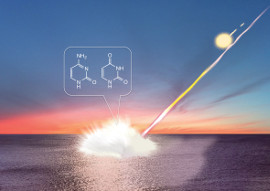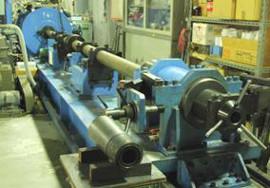Meteorite Impacts Can Create DNA Building Blocks
2015.08.18
Tohoku University
National Institute for Materials Science
Hiroshima University
A new study shown that meteorite impacts on ancient oceans may have created nucleobases and amino acids.
Abstract
With precise analysis of the products recovered after impacts, the team found the formation of nucleobases and amino acids from inorganic compounds. The research is reported this week in the journal Earth and Planetary Science Letters.

Figure 1: Schematics of nucleobases formation by meteorite impact on earth.

Figure 2: Single stage propellant gun at National Institute for Materials Science Japan used for the hypervelocity impact experiments.
